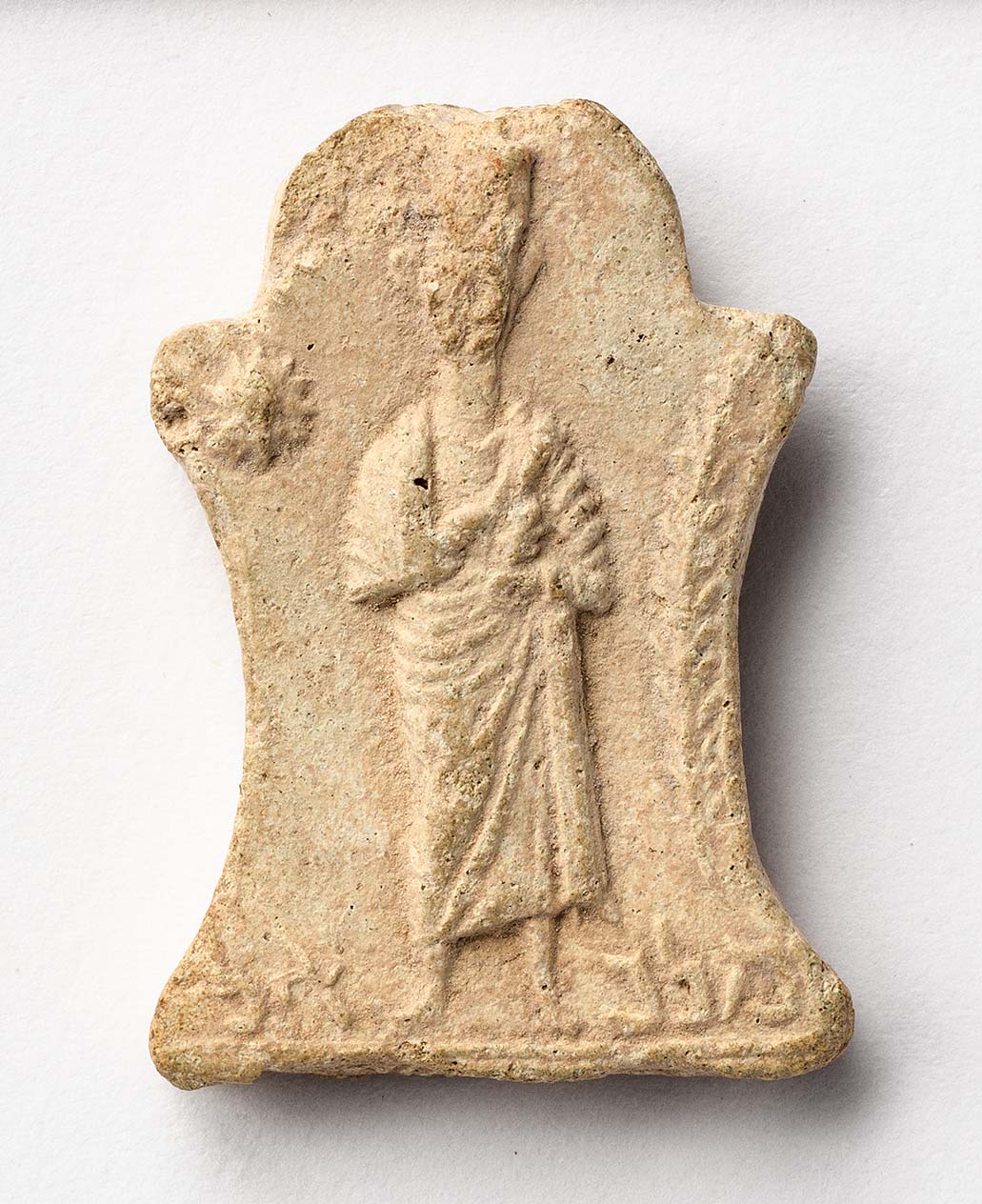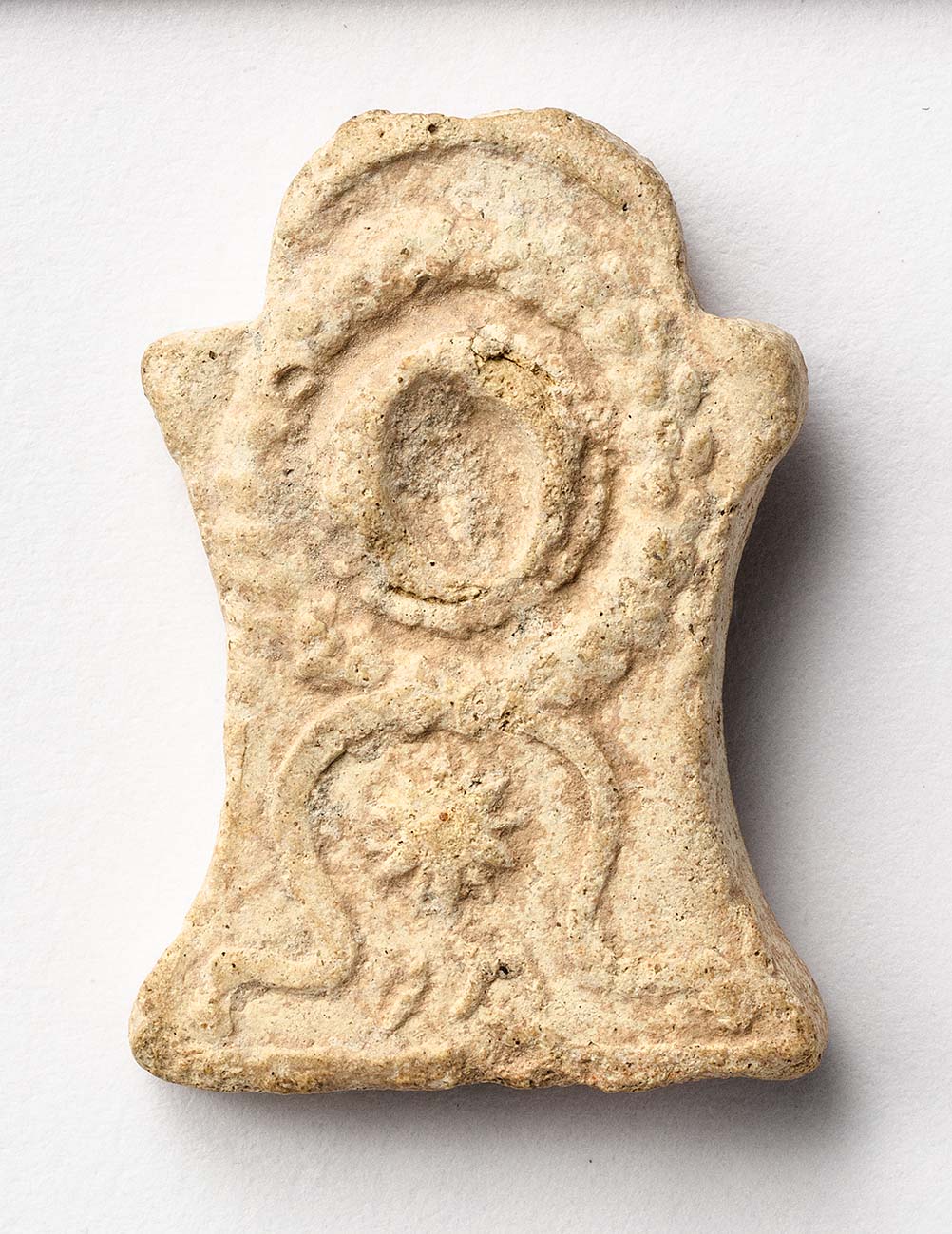Tesserae as evidence of Palmyrene societal structures
By Rubina Raja, Nathalia B. Kristensen and Olympia Bobou.


One of the distinct features of Palmyrene society was the organisation of and participation in banquets connected to specific sanctuaries and cults. Entry to these events was in some cases granted through a clay token, the so-called tesserae. These were created in custom-made molds that were only used for a specific series of tesserae and never again. Usually the tokens carried depictions of priests on one side, while the other could show other symbols or objects connected to the banquets. Often the tesserae also carried inscriptions – by far most often in Palmyrene Aramaic and very seldom in Greek or Latin. A tessera in the Ny Carlsberg Glyptotek offers some insight into the organisation and structure of the banquets in Palmyra and also gives hints as to how at least some areas of Palmyrene religious economy was organised.
The tessera, inv. no. I.N. 3206, is oblong in shape with a rounded top (RTP 691). On one side, it has a molded wreath surrounding a seal impression and the image of a standing priest on the other side. The tessera has three inscriptions in Palmyrene Aramaic: “Portion 1” on the side with the seal impression, one on the side with the priest, “Malakʾel”, giving us his name, and the third on the edge of the tessera with a year, 118/119 CE, informing us that Malakʾel organized the banquet in which the tessera was used in the year 118/119 CE.
We know of 1132 different types of tesserae. Most of the surviving tesserae give us the name of the organiser or sponsor of the banquet. Much rarer is the indication of a year and of a portion. There are around twenty different types of tesserae that mention portions or measures, nineteen types mentioning wine, while oil, fat and veal are mentioned six times only. Although the type of produce is unknown on the Copenhagen tessera, Ingholt, Seyrig and Starcky, in their 1955 publication of the known tesserae from Palmyra, have argued that unspecified portions refer to wine.
We know that wine was imported to Palmyra, and the inscription on the Copenhagen tessera suggests that the organiser of the banquet would have acquired a substantial amount of wine. A buried pot found in the enclosure of the sanctuary of Arsu could give a clue as to the number of participants in the banquet. It contained 125 tesserae of the same series (RTP 174) indicating that all the 125 tesserae would have been used in the same banquet.
We know that in Rome, a portion of a liquid was around half a litre. If we assume that the measures were the same in Palmyra as in Rome, the organiser would need to procure between 20 and 60 litres of wine, depending on whether the wine was served diluted or not.
Together with the cost of the various foods, it would have been a costly affair to organise a banquet. The Copenhagen tessera hints at the hierarchy in Palmyrene society as well as its connections to the wider Mediterranean world through the import of wine evidenced through the Tax Tariff. Understanding the specific social framework of Palmyra through the tesserae, during the course of the project, will help us determine the origins of circular economy and its sustainability.
Further reading
RTP: Ingholt, H. H. Seyrig and J. Starcky 1955. Recueil des Tessères de Palmyre. Paris.
Matthews, J. F. 1984. The Tax Law of Palmyra: Evidence for Economic History in a City of the Roman East. Journal of Roman Studies 74: 157-180.
Raja, R. 2019. The Palmyra Collection, Ny Carlsberg Glyptotek. Copenhagen.
Raja, R. 2019. Religious Banquets in Palmyra and the Palmyrene Banqueting Tesserae. A. M. Nielsen and R. Raja (eds.), The Road to Palmyra. Copenhagen, 221-234.
Shifman, S. 2014. The Palmyrene Tax Tariff. Edited by John F. Healy. Translated by Svetlana Khobnya. Journal of Semitic Studies, supplement 33.
